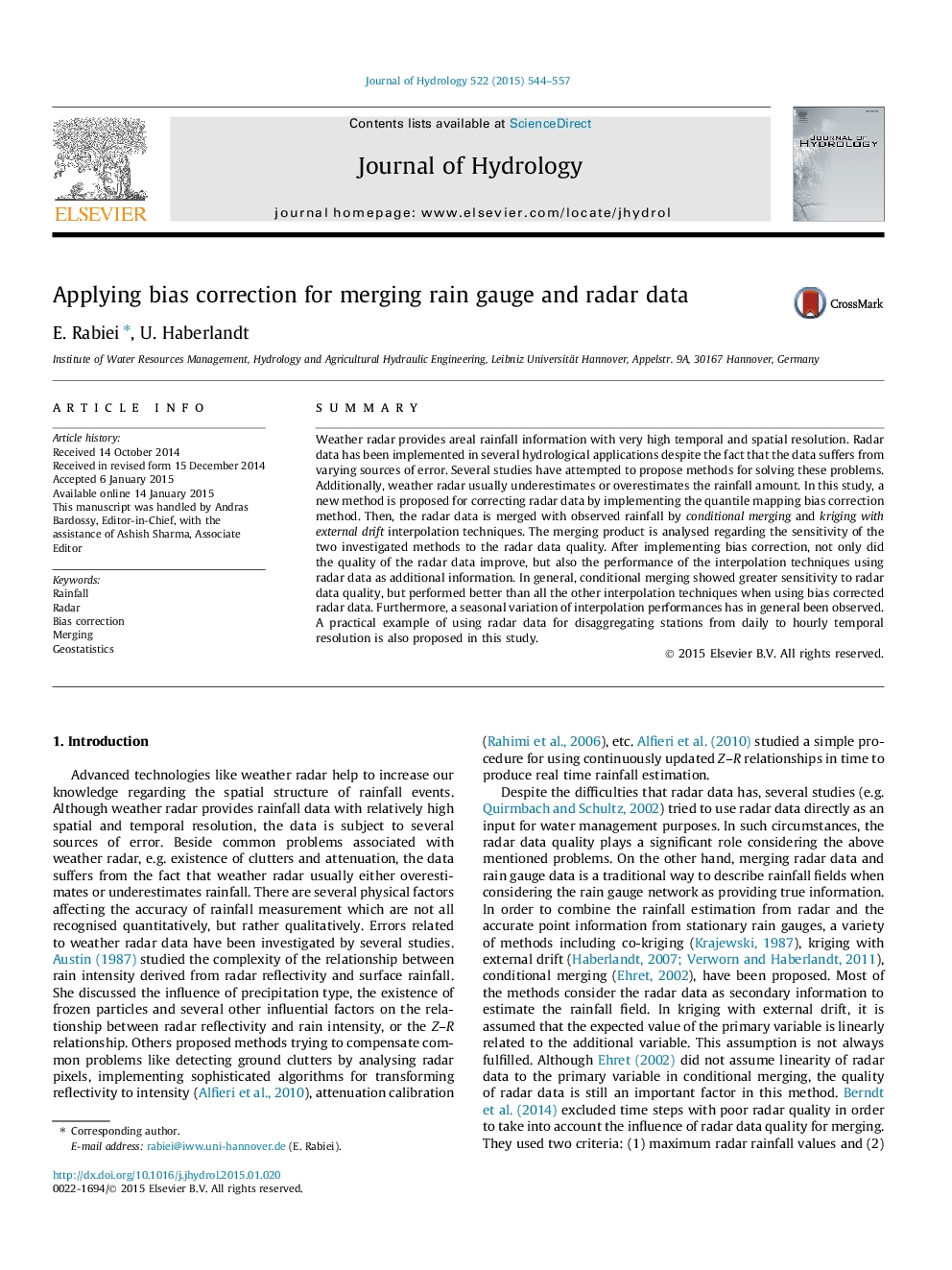| کد مقاله | کد نشریه | سال انتشار | مقاله انگلیسی | نسخه تمام متن |
|---|---|---|---|---|
| 6411359 | 1629928 | 2015 | 14 صفحه PDF | دانلود رایگان |
- Radar data is corrected by implementing the quantile mapping bias correction method.
- The sensitivity of the methods merging radar data and observation rainfall to the radar data quality is analyzed.
- The quality of radar data is improved after implementing the bias correction method.
- The interpolation performance improved when bias corrected radar data were used.
- Radar data is a useful source for disaggregating daily rain gauge network records temporally.
SummaryWeather radar provides areal rainfall information with very high temporal and spatial resolution. Radar data has been implemented in several hydrological applications despite the fact that the data suffers from varying sources of error. Several studies have attempted to propose methods for solving these problems. Additionally, weather radar usually underestimates or overestimates the rainfall amount. In this study, a new method is proposed for correcting radar data by implementing the quantile mapping bias correction method. Then, the radar data is merged with observed rainfall by conditional merging and kriging with external drift interpolation techniques. The merging product is analysed regarding the sensitivity of the two investigated methods to the radar data quality. After implementing bias correction, not only did the quality of the radar data improve, but also the performance of the interpolation techniques using radar data as additional information. In general, conditional merging showed greater sensitivity to radar data quality, but performed better than all the other interpolation techniques when using bias corrected radar data. Furthermore, a seasonal variation of interpolation performances has in general been observed. A practical example of using radar data for disaggregating stations from daily to hourly temporal resolution is also proposed in this study.
Journal: Journal of Hydrology - Volume 522, March 2015, Pages 544-557
